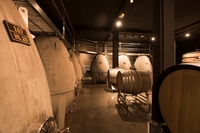Since she founded her own winery in 1999 after several years of working for others, the 67-year-old Balbo has served as the unofficial wine ambassador for Argentina  and for Mendoza in particular, helping it to become branded internationally as a diverse, world-class producer of fine wine.
and for Mendoza in particular, helping it to become branded internationally as a diverse, world-class producer of fine wine.
And she isn’t done yet, not ready to retire into the pages of wine bibliographies and the search engines of the internet. As Balbo’s wine business gets ready to celebrate 25 years of independent winemaking after almost two decades of doing it for other people – first in Salta, then back in her native Mendoza – she is full of plans, ideas, and opinions.
Let’s begin with Torrontes, which she helped to – the word most-used is “redefine” – in her first winemaking job at the Sucesión Michel Torino winery in Salta. (Yes, we must note Balbo was Argentina’s first female winemaker, yet that description seems to diminish and pigeon-hole her accomplishments as a winemaker, period.) Hers was the first wine I tasted made from that aromatic grape, and it struck be early on that it was more like Viognier in its versatility and flexibility and less like the more-limited Gewurztraminer and Riesling, delicious as both of those grapes can be. But Balbo isn’t finished with Torrontes. She wants still more.
“I believe the future of Argentine wines is high-end white wines,” she told me in a recent conversation. “Torrontes has a great potential for aging, I’m convinced of that, and Argentina is ready for a white wine revolution.” While many winemakers can produce both great white and red wines, Balbo’s advocacy of the whites might come as a surprise to younger American drinkers who first got to know Balbo though her Malbecs.
As we talk, I sip two of Balbo’s Torrontes wines from the same 2022 vintage – the “Signature” Valle de Uco Torrontes and the “Crios” Argentina Torrontes. The Crios  has lovely, fresh, blue-green aromas and flavors with great acidity, while the Signature is barrel-fermented, with savory, muted oak as background to the vibrant green fruit – just as clean and fresh, but more layered and begging to be paired with a sea bass from that ocean across the Andes. And while both have lovely floral notes, these Torrontes wines aren’t as heavily perfumed as her – and most Argentine Torrontes – have been in the past. Balbo’s aged Torrontes are equally spectacular.
has lovely, fresh, blue-green aromas and flavors with great acidity, while the Signature is barrel-fermented, with savory, muted oak as background to the vibrant green fruit – just as clean and fresh, but more layered and begging to be paired with a sea bass from that ocean across the Andes. And while both have lovely floral notes, these Torrontes wines aren’t as heavily perfumed as her – and most Argentine Torrontes – have been in the past. Balbo’s aged Torrontes are equally spectacular.
These variations in presentations and sources of grapes lead us into a discussion of her brands. Like many winegrowers, Balbo had to master both winemaking decisions and wine marketing decisions that need to parallel each other. “In Argentina, we are paid in Pesos [whose value may fluctuate wildly], so we need a wider portfolio of products and brands,” she adds.
The main brands or product lines are Susan Balbo Signature (the Sauvignon Blanc tasted retails for about $49), the Crios ($14) and the Ben Marco (also $14). Additionally, she says, “We are launching Crios ‘Sustentia’ as a sustainable, low-alcohol sub-brand.” The first two of the line being introduced into the U.S. are Crios Sustentia Chardonnay and Crios Sustentia Malbec.
Which leads into a discussion of changes in winemaking styles. “The Uco Valley is my main source of grapes these days, and, as a result of the quality of grapes, I now  have to do less as a winemaker,” Balbo says. “I haven’t done any bleeding of red grapes for about 15 years. I’m also using less oak in my wines. When you have super-premium grapes, you don’t need as much intervention on the part of the winemaker.”
have to do less as a winemaker,” Balbo says. “I haven’t done any bleeding of red grapes for about 15 years. I’m also using less oak in my wines. When you have super-premium grapes, you don’t need as much intervention on the part of the winemaker.”
Beyond these winemaking decisions are the marketing ones. Surprisingly, one conclusion is to sell less, not more, wine into the U.S. as a percentage of her total export sales. “The United States used to be 50% of exports, and now it is down to about 35%. We have been steadily reducing it over the past two or three years,” Balbo says. The reason is simple. “I think it’s risky to depend too heavily on any one market, so we are simply reducing our exposure.” In a sense, the logic is similar to that of having a portfolio of brands, but, in this case, Balbo is equally interested in balancing her portfolio of markets.
I ask Balbo if she could make wine outside of Argentina, where would it be. “I’m fascinated by places like northwestern Spain and northern Portugal,” she immediately replies. “I love the wines from there.” As the world’s most-noted producer of Torrontes, it isn’t surprising that Balbo would be intrigued by the places that produce lively Albariños and Alvarhinos.
But she notes she has another intellectual winemaking curiosity. “I plan to do more exploring of volcanic terroirs,” Balbo says, “especially the volcanic soils of Italy. We have volcanic soils in Argentina, and I would like to see what I can learn from other regions.”
So, fortunately, Balbo still has a lot of challenges ahead of her – good ones, like elevating the status of Argentina as a premium white wine producer and extending her knowledge of volcanic soils – and bad ones, such as the tenuous state of the Argentine economy and its virulent inflation.
At the same time, she is welcoming her grown children to participate more fully in the business. Her oldest, José Lovaglio, is in charge of innovation and development, while daughter Ana Lovaghio heads marketing. Together, they are also helping Balbo branch out into hospitality – and, typically, not just in a half-hearted manner. The “Susana Balbo Stays” arm of her business has two properties, the Susana Balbo Mountain Lodge in the Valle de Uco and the Susana Balbo Winemaker’s House and Spa Suites in Lujan de Cuyo, as well as the LaVida in-house restaurant. Both venues have been featured prominently in international travel magazines.
So, stay tuned. Even with her many accomplishments and flush agenda, don’t expect the growing list of Balbo’s innovations to slow down anytime soon.
